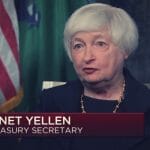
David F. Swensen is the chief investment officer at Yale University and the author of “Unconventional Success: A Fundamental Approach to Personal Investment.”
AS stock prices have gyrated wildly, many investors have behaved in a perverse fashion, selling low after having bought high. Individual investors bear some responsibility for ill-advised responses to the ups and downs in the market, but they are not the only ones to blame. For decades, the mutual fund industry, which manages more than $13 trillion for 90 million Americans, has employed market volatility to produce profits for itself far more reliably than it has produced returns for its investors.
Too often, investors believe that mutual funds provide a safe haven, placing a misguided trust in brokers, advisers and fund managers. In fact, the industry has a history of delivering inferior results to investors, and its regulators do not provide effective oversight.
The companies that manage for-profit mutual funds face a fundamental conflict between producing profits for their owners and generating superior returns for their investors. In general, these companies spend lavishly on marketing campaigns, gather copious amounts of assets — and invest poorly. For decades, investors suffered below-market returns even as mutual fund management company owners enjoyed market-beating results. Profits trumped the duty to serve investors.
Mutual fund companies, retail brokers and financial advisers aggressively market funds awarded four stars and five stars by Morningstar, the Chicago-based arbiter of investment performance. But the rating system merely identifies funds that performed well in the past; it provides no help in finding future winners. Nevertheless, investors respond to industry come-ons and load up on the most “stellar” offerings.
In 2010, investors redeemed $152 billion from one-star, two-star and three-star funds and placed $304 billion in four-star and five-star funds. In the crisis-scarred year of 2008, even as investors withdrew $174 billion from one-star, two-star and three-star funds, they added $47 billion to four-star and five-star funds. Year in and year out, flows to four-star and five-star funds prove remarkably resilient and overshadow flows to the three bottom categories.
Full link here.











